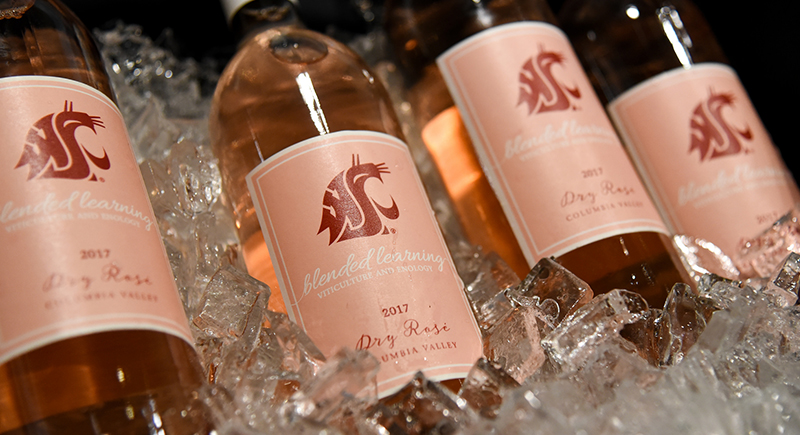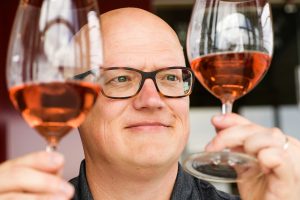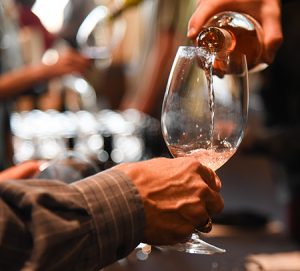
May 21, 2018 50 shades of Rosé: WSU researcher perfects wine’s distinct colors
By Linda Weiford, WSU News
PULLMAN, Wash. – Jim Harbertson sees through rosé colored glasses.

WSU wine researcher Jim Harbertson enjoys, admires and carefully weighs the hues, shades and tints of rosé wine. Photo by Robert Hubner, WSU Photo Services
Finely tuned shades and hues ranging from blush and coral to berry jam. Harbertson, a wine researcher at Washington State University Tri-Cities, has become an expert in the science of pink-esque pretty.
With the rosé wine craze in full bloom and warmer weather helping to catapult its popularity, thanks to the associate professor of enology’s research, you can judge a rosé by its color.
“More than other wine types, color heavily influences consumers’ perceptions of rosé. This makes winemakers particularly mindful of achieving just the right color,” he explained.
Rosé stands apart from other wines in its diversity of hues, shades and tints. Though aroma and flavor are important to consumers, studies say the number one factor is its pinkish charm.
Rosé’s color also signifies its style. A light-colored rosé is expected to be a lighter-bodied wine and a darker one to be more full-bodied, said Harbertson, of WSU’s viticulture and enology program.
But nailing down the right color can be tricky. Rosé is made by exposing dark wine-grape skins to the juice for a short time, typically 2-48 hours until it reaches a desired color. The challenge is, that perfect pink lightens during fermenting and then darkens after being bottled, Harbertson said.

A wine science student pours a glass of rosé to a recipient during the WSU Blended Learning spring release party this spring.
“You lose about 60-70 percent of the initial color depending on how much color you start out with,” he said. “Rosé may be easy to drink but it is not easy to make.”
A decade or so ago, rosé was mostly viewed as sweet and cheap. Now considered chic and sophisticated, sales climbed 40 percent in 2017, according to the market researcher Nielson. As more consumers discover pink gems from Washington state, winemakers started turning to Harbertson for scientific advice on how to develop colors more precisely.
They also set forth a guide for winemakers to follow that allows them to predict color changes analytically to achieve that gorgeous shade of ballet-slipper-pink or deep rouge.He and graduate student Caroline Merrell conducted a study by tracking color changes that occur during fermentation and after the rosé is bottled. Published in Catalyst, a journal by the American Society for Enology and Viticulture, they found that sulfur dioxide management is an important factor in developing the color of rosé wine. (Go to: (http://www.asevcatalyst.org/content/1/3/80).
“What’s significant is that our study provides tools to winemakers to measure apparent and potential color in their rosé wines. There’s more science and less guesswork involved in the process,” he said.





